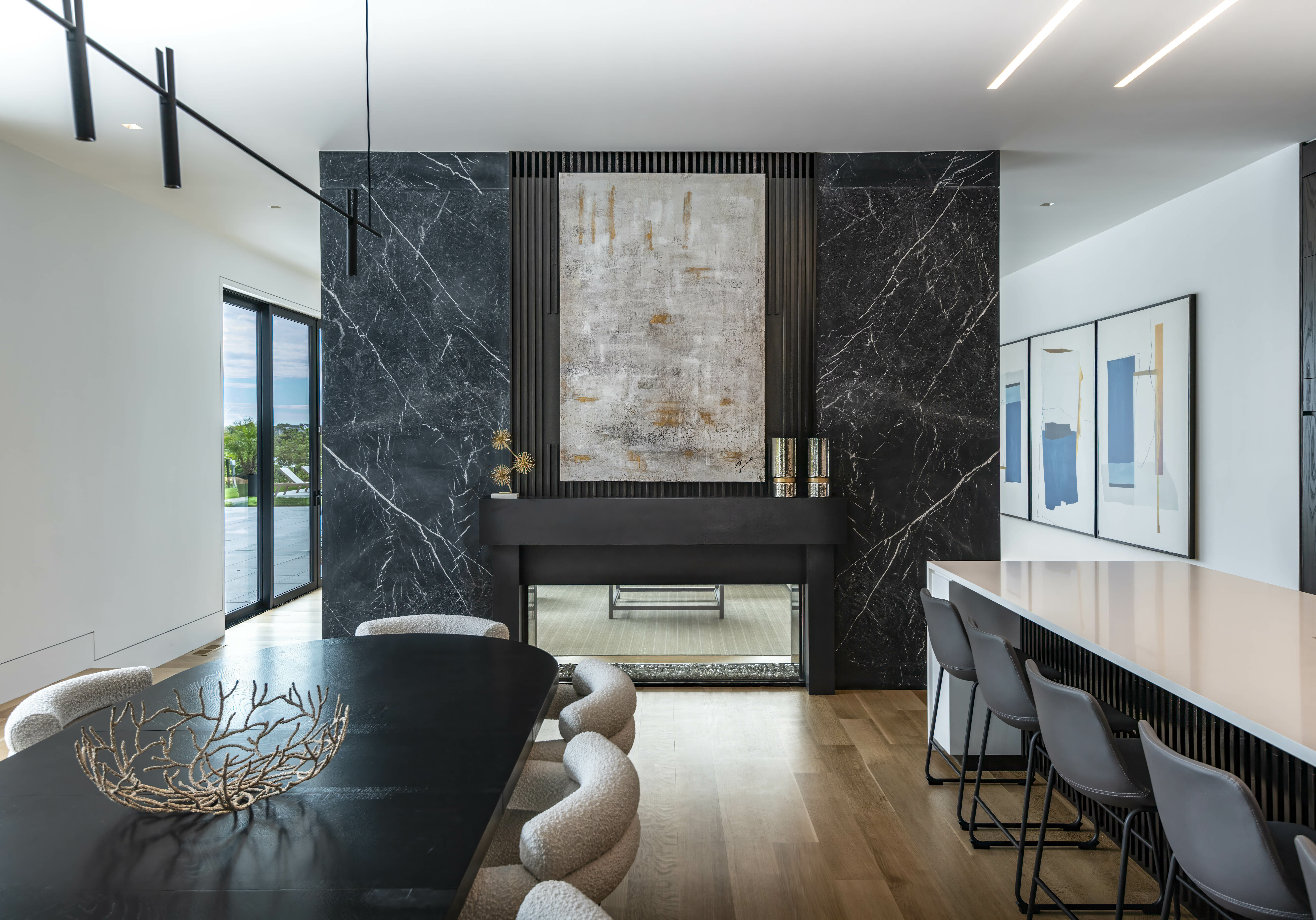In the world of interior design, texture plays a pivotal role, serving as a subtle yet powerful tool that can dramatically transform a space. At Mojo Stumer, the nuanced use of texture in interior design is central to our approach, bringing depth and character to both residential and commercial environments. This blog post dives into the art of mixing textures in interior design, illustrating how our team at Mojo Stumer harnesses this element to influence mood, aesthetics, and spatial perception in a variety of our projects.
Texture as a Design Element
The use of texture in interior design goes beyond mere tactile sensation; it’s a key component in setting the tone and character of a space. Mojo Stumer’s residential projects often see a thoughtful blend of soft, inviting textures with sleek, contemporary ones. This mixing of textures in interior design is aesthetically pleasing and creates a layered and dynamic atmosphere. Soft fabrics and plush furnishings evoke comfort and warmth, while smooth, glossy surfaces lend a modern, sophisticated edge.
In our Rolling Hill House project, our team of interior designers utilized different woods on the floors, walls, and furniture to create a sense of warmth in an ample space. The large windows brings a stark lighting contrast and they cast shadows throughout the day, adding another layer of interest to the space.

Enhancing Spaces with Textural Contrasts
Contrast is a powerful tool in interior design, and Mojo Stumer expertly employs it through textures. Rough, rustic elements juxtaposed with smooth, refined surfaces create an engaging dialogue within a space. For example, a rugged stone wall against a backdrop of polished marble floors can heighten the sensory experience of a room, adding visual interest and depth. In commercial settings, this approach can be particularly effective, where the strategic use of texture can guide the flow of space and influence customer behavior.
While Mojo Stumer’s interiors are highlighted with textural contrasts, our exteriors use this principle, too. In our ADRE Headquarters project, Mojo Stumer’s team used dark paneling in contrast with glass, metal, and organic materials on a vertical wall to create a visually stunning entrance to the space. With the addition of custom lighting around the entire facade, this corporate office looks stunning from all angles.

Texture and Emotional Connection
The use of texture in interior design can profoundly impact our emotional response to emotions and behaviors. Soft, plush textures in a living room can create a welcoming, cozy ambiance, perfect for relaxation and socializing. In contrast, using harder, sleeker textures in a workspace can promote focus and efficiency. Mojo Stumer understands this emotional language of textures, carefully selecting materials that resonate with the intended purpose of each space.
In our recent Roslyn House project, Mojo Stumer utilized specific textures in each room to evoke different emotions. This renovation was focused on illustrating how modern interior design can be successfully executed in older traditional homes. Mojo Stumer’s interior team used many textures in the bar to create a uniquely layered space. Light wood flooring was paired with black and gold lacquered cabinetry for a stark contrast, while the window treatments and light fabric barstools brighten up the room. The result is a stunning entertainment space that feels opulent and inviting at the same time. Mixing textures in interior design is a definite way to give a room layer and depth without changing the size or function of it.

Texture and Sensory Experience
The sensory experience of texture is vital in interior design. The tactile quality of surfaces can make a space feel more grounded and real. Mojo Stumer often features mixing textures in interior design that appeal to the touch, from the smooth coolness of marble accents to the warm, organic feel of wood. This adds visual interest and encourages interaction with the space, making it more inviting and engaging.
In our Fort Pond House project, our team of interior designers took a note out of our own book and played with the juxtaposition of using dark marble accents on the fireplace in combination with warm woods on the ceilings to create a homey feeling in a largely open kitchen and dining space. The space feels contemporary and clean instead of cavernous and cold, making it the perfect place to entertain friends and family.

Texture in Visual Perception
Textures also play a crucial role in altering visual perception. Depending on their application, they can make a room feel more extensive or more intimate. Light, reflective textures can make a space feel more open and airy, while darker, richer textures can create a sense of coziness. Mojo Stumer’s use of texture in interior design skillfully manipulates these perceptions, enhancing the spatial qualities of each project.
Our Luxottica Group project is a perfect example of how our interior design team brought together multiple light textures and materials together to create a central space for employees to gather. The massive skylight above the dining area frames the space, while the white lacquered ceiling panels, glass conference room, and organic plant wall bring additional brightness to the oversized space. Utilizing texture in interior design for flow and purpose will always bring additional value to a room, no matter how large or small.

Conclusion
Texture in interior design is a fundamental element that Mojo Stumer utilizes, and its thoughtful application can transform spaces in profound ways. Mojo Stumer’s mastery of mixing textures in interior design demonstrates how different materials can come together to create aesthetically pleasing and emotionally resonant environments.
Discover the transformative power of textures in your next design project. Contact Mojo Stumer to explore how the right blend of textures can revolutionize your residential or commercial space, making it not just a place to be but an experience to feel.

